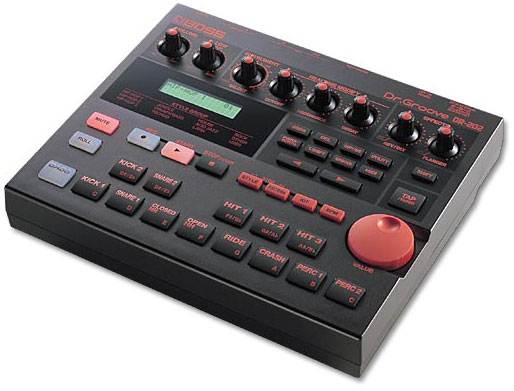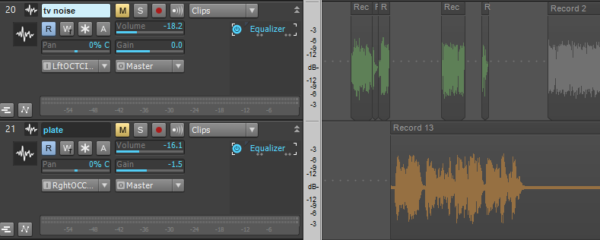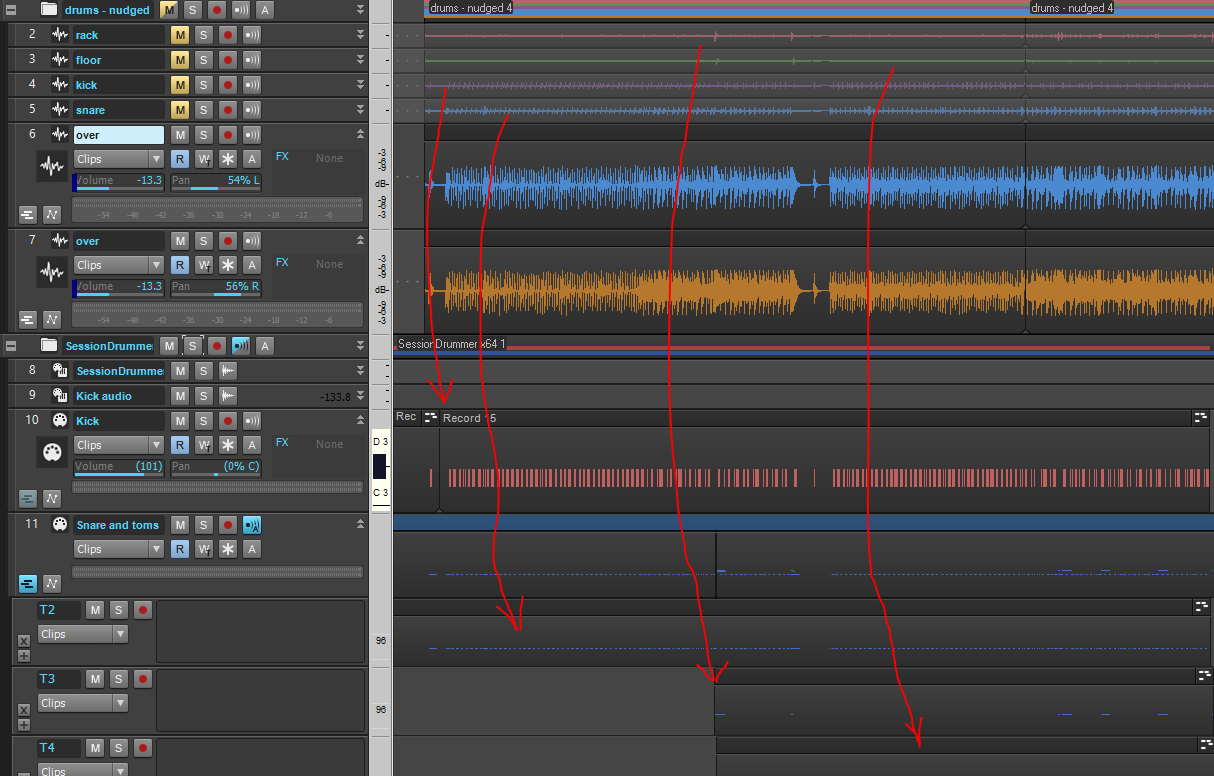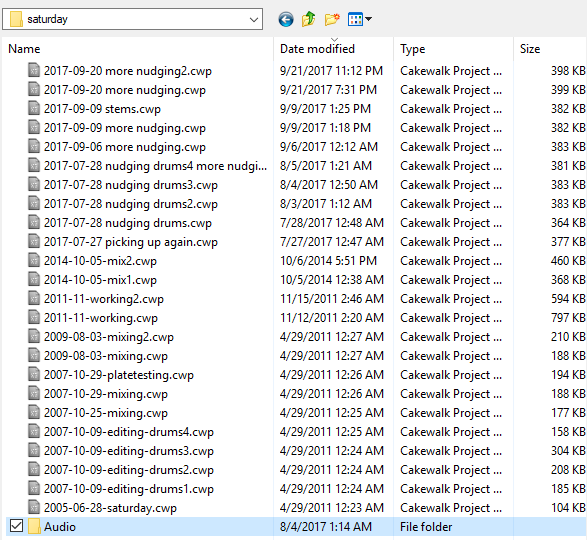Seth, me, Sam. We’re playing the Timbre Room on April 14!
Upcoming shows
No shows booked at the moment.
Categories
Archives
Meta
Eds. note: this post is the fourth in a series of posts about songs from my last EP, Old Haunts Volume 1.
This was my favorite song on the EP I think, and I might be the only one who likes it. I have to please myself first or what’s the point, right?
What’s fun about this song is it’s an instrumental scrapbook of a particular time. I recall one night in 2007 or so just playing around on guitar and recording a loop, which is the first guitar you hear in the track. Then I played the lead bits, and then the fuzzy guitar where it changes and gets darker while the original loop is still playing. I don’t quite remember but I think all of the guitars came together on the same night and was just a sketch, something to be re-recorded if the music was worth pursuing.
Since then I’ve come back to it a few times thinking that yes, I like this, I should record it “for real” but never got past the original sketch because I liked the feel of it. At some point I was playing with a Moog synth and added the modulated/noisy tracks that make up the intro, and a sampled tambourine. Late last year I added bass and some found samples.
The samples are their own stories that are just fun for me.
One night when I lived in Madrona I was trying out my shortwave radio on just FM or AM, nothing special, and found an audio loop of real estate information from a nearby house. I guess that was a thing 1o years ago, to broadcast a very low-power signal with an audio message describing the house for sale and how to contact the realtor. I recorded some of it and when revisiting this song I thought to try adding it, I think it works.
I particularly like that for me it brings to mind an image of our rental house in Madrona, 2007 or 2008 or so, me in the basement at night recording the guitar loops while that house a block away was for sale. It’s very specific and I doubt both things were actually happening at the same time, but they may as well have been, and in this song now they are.
The wind chimes are also a specific Madrona memory, walking through the neighborhood with a Zoom H2 flash recorder, down the street that my father grew up on which coincidentally was a couple of blocks from where we were living and recording wind chimes. There were lots to record. I had no specific plan for them, I figured why have a flash recorder if not to do stuff like that.
I like the music of this song, how it feels as it builds up and resolves, but it’s likely I’m more biased toward it because of these personal details.
Eds. note: this post is the third in a series of posts about songs from my last EP.
A theme I’m playing with in my latest EP Old Haunts Volume 1, and for that matter any other volumes I might make, is how recordings can collect pieces of sound or ideas from different places and times and then mix them together into one moment. “I Guess Not” is in some ways the newest song on the EP and in other ways not so much.
It began as a microcassette scratch recording of guitar and melody from May 2003. I have tons of these “proto-songs,” but since tapes are an annoying medium I didn’t listen back to most of them until months or years later while at the same time capturing them in digital form, at which point I would decide if they had anything good in them or not.
Most of these proto-songs are very bad but some will have a hook or at least something interesting going on. Among this subset most don’t become fully realized songs, but a few like “I Guess Not” do. An even smaller subset of those go on to become “real” recordings.
I started this recording in September 2008 in a practice space with drummer Terry Kyte, who was in Open Choir Fire at the time. I had sent him a demo a few days earlier, then we met up I think in their space on Capitol Hill and ran through a couple of takes with me on guitar and him on drums. His part and performance were awesome.
A couple of months later my friend and erstwhile bandmate Sugar McGuinn came to my house and recorded bass on top of what Terry and I had done. He also played a few takes and was great.
Then nothing. I think in my head it had been a good attempt but not worth pursuing, either because I didn’t mic the drums well, or because I didn’t like the lyrics much, or because I didn’t get a good guitar take. So it sat on a hard drive for years and years… til last Summer, when I was looking for recordings to finish and came across it again.
At the time my wife and I had recently become a “waiting couple” for adoption, and one piece of advice we got was to find projects to work on while waiting. I picked “finish some old recordings and put out an EP as Sun Tunnels” as one project. Also I started occasionally running around Greenlake while the weather was nice, and I’d listen to mp3s of stuff while running to decide what was worth working on and what specifically needed to happen to finish each song.
“I Guess Not” needed new lyrics, a second guitar to join (and partly cover up) the one I’d recorded along with Terry (the guitar and drums bled together in the audio and so couldn’t really be separated), maybe some harmony vocals, an instrumental solo of some kind during the interlude, and better mixing.
In the end it got all of those things, as best as I could. Lyrically I kept some of the original lines from what I wrote in 2008 (or whenever it was) but bent them toward a new theme. I think the song now is about smartphones and how weirdly hypnotized we are by them in a way that might seem extremely strange to an observer from 2008. I think about it most every day on the bus how weird it is. We’re all staring at our hands.
Eds. note: this post is the second in a series of posts about songs from my last EP.
Cast your mind back to the year 2000. Remember it? I do, some of it, and one thing I did late that year and early 2001 was to write a song called “Saturday.”
“Saturday” is one of the more upbeat songs I’ve come up with, though the lyrics are a classic 90’s ironic slacker take on getting up late on a Saturday and feeling like you’re wasting your life. Ahh, to be 22 again. No thanks.
I played it at shows for a while and maybe tried to record it at some point back then, I’m not sure. I know I played it live at Aurafice Cafe on March 16, 2001 because I had an mp3 of it on my website for a while. Coincidentally that’s how I met Seth Howard, he somehow found my site back then and emailed me. We still hang out all the time.
Later I decided to record it “for real” just to have a memory of this song I’d written and I thought it would be easy and fun to do. I started recording in June 2005, and finished it just this past October 2017.
What took so long? I can report I did not work on it continuously for 12 years. Instead I’d been picking up the audio project (in Cakewalk Sonar, RIP) every few years and messing with it, then dropping it again when it got tedious. It got tedious for one reason mainly: drums.
The drums started easy: with a Boss DR-202 drum machine like this one:

I’ll usually start a recording with scratch guitar and vocals on top of fake drums (acting mainly as a metronome that’s more fun to play along with), then add real drums, then redo the other tracks to establish their “final,” better versions that are also more cohesive with the “final” drums. I used to get fake drums from the DR-202 til I sold it in favor of software plugins. I kind of miss it now.
This song “swings” and getting that beat right on a drumkit wasn’t easy for me. In fact I never got it right, but rather recorded some takes and then cut and pasted them up in Sonar. I remember spending hours and hours on the cutting and pasting in late 2007, at which time I also recorded most of the other parts (vocals, bass, guitar solos). Even after that though the drums weren’t right.
I also took some sideways detours. This was shortly after I moved to Madrona and Seth (aforementioned) suggested I try building a plate reverb, presumably because one would fit in the basement. I tried building one and spent a lot of time at it, and in fact there are 2 noisy audio tracks (muted) of my vocals going through the plate.

I did not use those. There are also muted samples of random TV commercials. For fun? No to those too.
I know I picked the song up again at least 3 more times months and years apart, to try mixing and remixing it. Still not right.
Things picked up in 2014 when I attended some sort of Sonar seminar/road show and learned that you could easily extract MIDI transients from audio tracks, and decided I should try that. I did, and it worked. What this did was to create MIDI containing the information of which drum was hit when in time and how hard.
Now I could replace my kick, snare and toms with samples and I could move them around in time, make them louder, quieter, etc. I cut the low end out of the drum overhead tracks so that you can only hear the cymbals in those, and now the whole kit comprises sampled drums along with the “real” (edited, from my earlier work) cymbals.

wavs to MIDI
The only problem is that the MIDI captured my playing, after edits, which still wasn’t good, as far as timing and feel. With MIDI you can manipulate notes, in this case drum notes, and you can apply processes to them en mass such as “quantize.”
Quantizing moves notes to set locations in time, like say, to the quarter note. All notes that are “pretty close” to a quarter note location in time will get moved to that nearest quarter note as part of the quantize process. This makes it sound more like a machine playing but it’s better than a not-so-good drummer.
So I tried quantizing, but I could not get it to work right. For one thing, the version of Sonar I use (X3) has a lousy user interface. It represents decades of tacking new features onto existing features without ever designing for the whole experience, and then moving things around so that you can’t find the things you use all the time because they’ve been moved somewhere else. Like the quantize function. But then also, the song swings, which apparently is hard to quantize, and it just would not work.
So then another three years went by til I picked it up again and just moved the drum notes around by hand. It took a long long time.

too many edits
Then I sent it to mastering, and it came back with the kick drum really pronounced in the mix, so I could really hear that it still wasn’t right. So I worked on it some more and sent it back to mastering. And it was still bad. So I worked on it more, and then it was done.
I should take a moment and acknowledge that this was not good time management. I should have tried again with a real drummer, or programmed a drum machine, or started over entirely. I swear 95% of the time spent on this song was on the drums and most of that was just the kick drum. Which ended up too quiet in the mix! I’m going to try not doing that again.
On the plus side, I got to cross it off the list and put it on an EP. Hear it on Bandcamp.
These things are related, maybe:
Apple Music is set to surpass Spotify in US subscribers.
I view these as tiny (miniscule) glimmers of almost-good news for musicians, premised on the contention that tech has been very very bad for musicians this century, where musicians are defined as a class of professional laborers whose work is to compose original material and/or to perform live and on recordings, and bad is defined as a state in which music making by artists with established audiences can’t sustain their livelihood.
If LPFM is growing in popularity (a big if, since there’s not much evidence of there being any actual listeners) it would suggest that listeners are feeling a lack of shared experience and human interaction in algorithmic music programming and on-demand streaming. Shared experience is one of those things musicians trade in.
This article/polemic makes an argument for what’s wrong with Spotify. The same argument would apply to Apple Music, except for one difference: Apple’s main business is selling the devices through which one listens to the music. The recording industry itself was born out of phonograph manufacturers partnering with artists to sell Victrolas, not to sell records.
I’ve been observing in the last decade how the most effective way to have a career in the music business is not to make music. It’s far more lucrative to sell services to musicians, as with Tunecore or Distrokid or Reverb or renting out practice spaces, or to sell instruments, effects pedals or recording software, or as a developer or marketer or whatever at a service that essentially gives music away to listeners (i.e. Spotify) — than to actually make music.
Obviously tons has been written about this and I don’t have much to add, other than to observe that as Apple increases market share of streaming I would argue it begins to assume some moral responsibility for helping to solve this problem. As Victrola engaged Enrico Caruso in the 20th Century, Apple should sponsor and develop artists, not just take their cut and assume “they were gonna do it anyway, even if it doesn’t pay.”
Just consider:
Could companies like Apple pick up where labels left off? I think they can afford it.
Update: this article goes farther to answer that question.